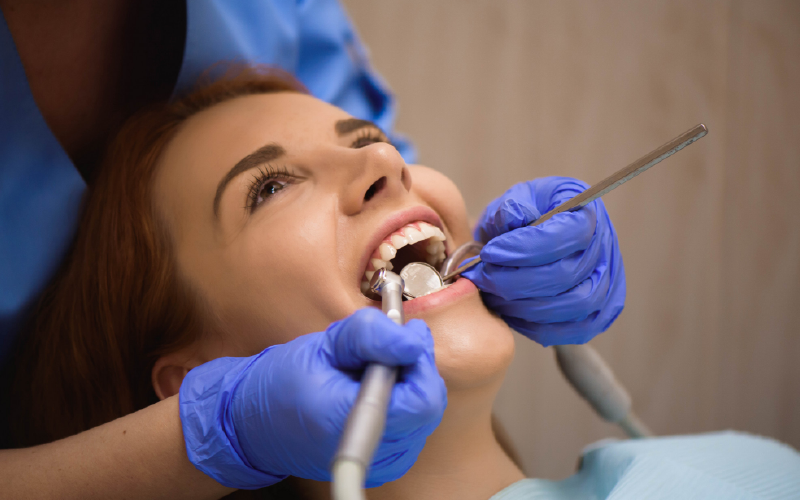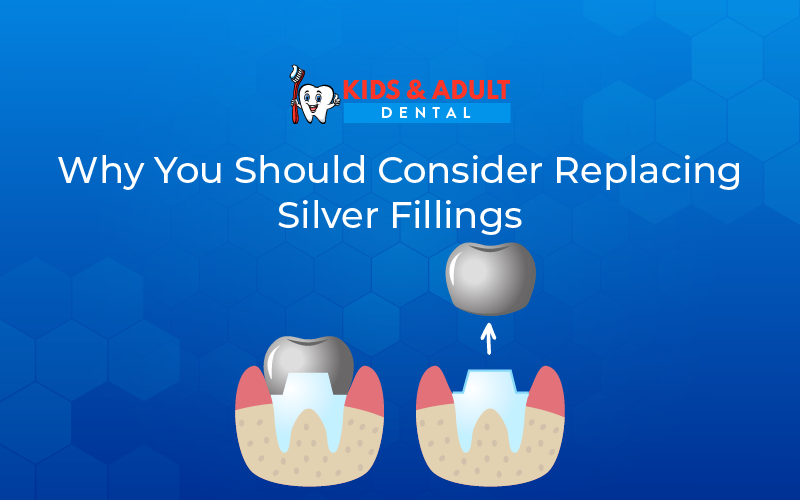Silver fillings have been widely used in dental restorations for many years. They have played a crucial role in preserving and restoring oral health.
However, advancements in dental materials and evolving patient preferences have led to the consideration of replacing silver fillings with alternative options.
In this article, we will explore the reasons why replacing silver fillings can be beneficial, addressing various aspects such as health concerns, aesthetics, longevity, and allergies.
By understanding these factors, individuals can make informed decisions about their dental restorations.
What are Silver Fillings (amalgam fillings)?
Silver fillings, also known as amalgam fillings, have been used in dentistry for over a century. They were introduced as a reliable and cost-effective solution for treating dental cavities caused by tooth decay.
The traditional use of silver fillings stems from their durability and strength, making them suitable for restoring functionality to decayed teeth.
Composition and Properties of Silver Fillings

The composition of silver fillings contributes to their unique properties. Silver provides strength and stability to the filling, ensuring its durability over time. Tin enhances the material’s workability, making it easier for dentists to shape and mold during the placement process.
Copper, known for its resistance to corrosion, adds further strength and longevity to the filling. Lastly, a small amount of mercury is added to bind the metals together, creating a pliable mixture that can be effectively placed and compacted into the prepared tooth cavity.
The use of silver fillings has been widespread due to their affordability, strength, and long-term performance. However, advancements in dental materials and evolving patient preferences have led to the consideration of alternative options.
Read Also: How To Fix Tooth Gaps With Cosmetic Dentistry
IV. Reasons to Consider Replacing Silver Fillings
1. Health Concerns and Safety

A. Mercury Content in Silver Fillings
One of the primary reasons individuals consider replacing silver fillings is the concern over mercury content.
Although the amount of mercury in amalgam fillings is considered safe for most people, some individuals may worry about potential risks associated with prolonged exposure.
As a result, they may choose alternative filling materials to alleviate these concerns.
B. Potential Risks and Controversies
Apart from mercury, there have been discussions surrounding the potential risks and controversies associated with silver fillings. Some studies suggest a possible link between amalgam fillings and certain health conditions. While scientific evidence remains inconclusive, it has prompted individuals to explore alternative options for dental restorations.
2. Aesthetics and Smile Enhancement

A. Visible Appearance of Silver Fillings
Silver fillings are distinguishable due to their dark gray color. When they are visible in the mouth, particularly on the front teeth or when smiling, some individuals may feel self-conscious about their appearance. Opting for tooth-colored fillings can provide a more natural and aesthetically pleasing result, enhancing their confidence and smile.
B. Desire for a More Natural-Looking Smile
With advancements in dental materials, tooth-colored fillings, such as composite resin or porcelain, have become popular alternatives to silver fillings.
These materials can be custom-shaded to match the natural color of teeth, creating a seamless and virtually indistinguishable restoration. This allows individuals to achieve a more natural-looking smile while maintaining optimal dental health.
Read Also: Red Flags of Root Canal Trouble
3. Longevity and Durability

A. Lifespan of silver fillings
While silver fillings are known for their durability, they are not invulnerable to wear and tear over time. As the years go by, silver fillings may experience degradation, leading to cracks, leakage, or secondary decay. Replacing silver fillings can help ensure the long-term functionality and longevity of dental restorations.
B. Potential Issues with Wear and Tear Over Time
As silver fillings age, they may undergo physical changes due to constant exposure to chewing forces and natural tooth movements. This can result in the weakening of the filling structure and increased susceptibility to fractures or recurrent decay. Replacing worn-out silver fillings with newer restorative materials can help prevent future dental complications.
4. Allergies and Sensitivities

A. Common Allergic Reactions to Silver Fillings
Some individuals may develop allergic reactions or sensitivities to the metals present in silver fillings, such as silver, tin, or copper. These reactions can manifest as oral discomfort, irritation, or even systemic symptoms in rare cases. In such instances, exploring alternative filling materials that are hypoallergenic can help alleviate these issues.
B. Seeking Alternative Materials for Better Compatibility
For individuals with known metal allergies or sensitivities, replacing silver fillings with non-metallic options can provide better compatibility and reduce the risk of adverse reactions. Tooth-colored fillings made from composite resin, ceramic, or porcelain can offer excellent aesthetic results while being more biocompatible.
Read Also: Why Do Dental Fillings Sometimes Need to be Replaced
Are tooth-colored fillings as durable as silver fillings?
Tooth-colored fillings, such as composite resin or ceramic restorations, have seen significant advancements in recent years.
While they may not have the same strength as silver fillings, modern tooth-colored materials are designed to withstand normal chewing forces and provide long-lasting results.
Their durability depends on factors such as proper placement, oral hygiene practices, and routine dental care.
What are the potential risks and side effects of the replacement procedure?

Replacing silver fillings typically involves the removal of the existing filling material and the placement of a new restoration. While the procedure itself is considered safe, there are potential risks and side effects to be aware of.
These may include temporary tooth sensitivity, gum irritation, or minor discomfort. It is essential to consult with a qualified dentist to discuss any concerns and ensure a smooth and successful replacement procedure.
Can silver fillings be removed safely?
Yes, silver fillings can be safely removed by a skilled dentist following specific protocols and precautions. The removal process aims to minimize mercury exposure and ensure patient safety.
Dentists may utilize isolation techniques, such as rubber dams, to prevent the ingestion or inhalation of debris during the removal process. It is crucial to seek professional dental care for the safe and proper removal of silver fillings.
Conclusion
In conclusion, if you have silver fillings and are considering a replacement, there are numerous benefits to explore. Addressing health concerns, improving aesthetics, and ensuring durability and compatibility are all important factors to consider.
To make an informed decision and embark on the journey towards a healthier lifestyle, we encourage you to consult with our trusted team at Kids & Adult Dental Clinic.
Schedule an appointment today to explore alternative dental filling options and experience our affordable dental services. If you’re searching for ‘emergency tooth filling in Colorado look no further. Our clinic provides comprehensive solutions to meet your dental needs.

